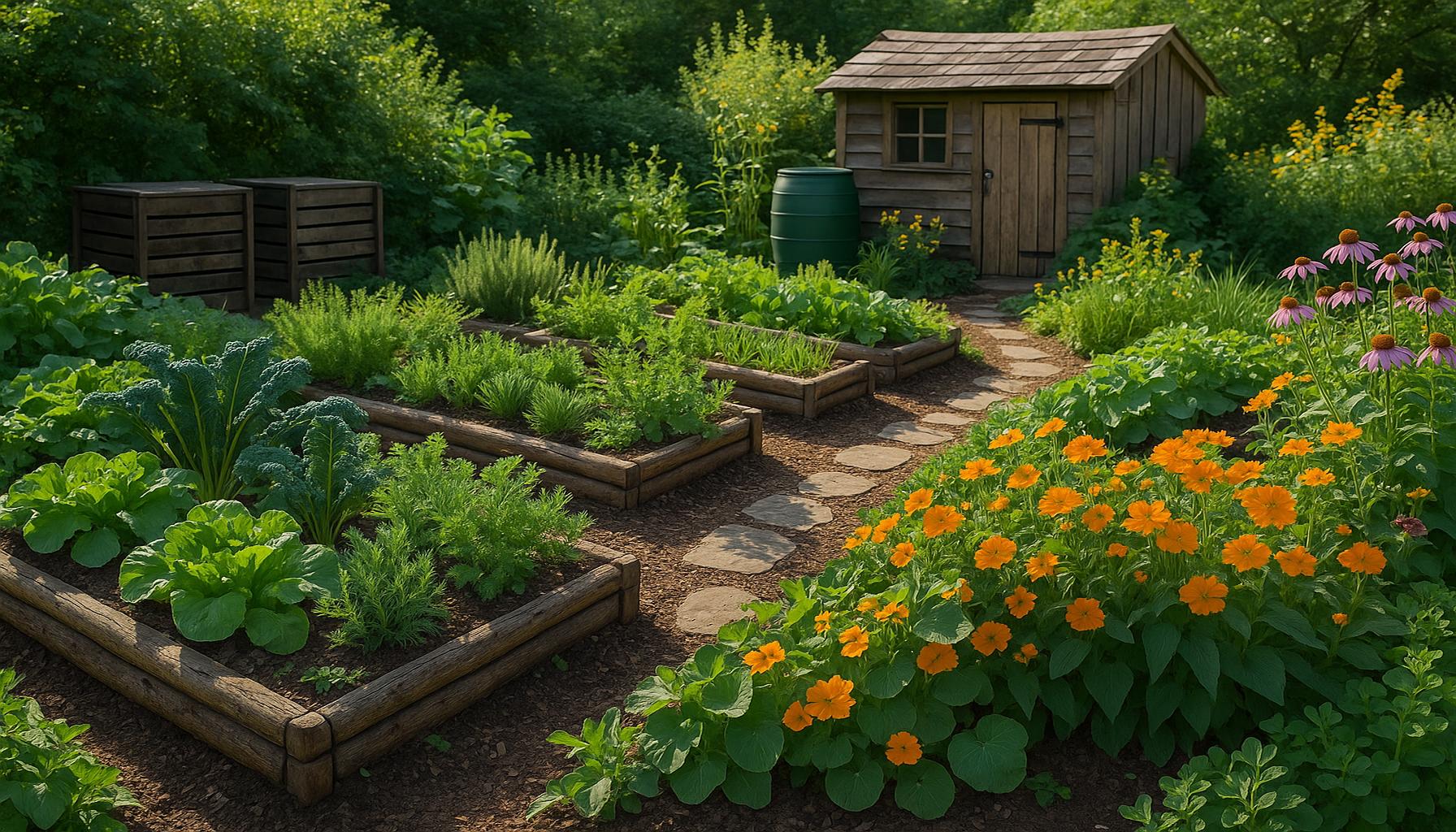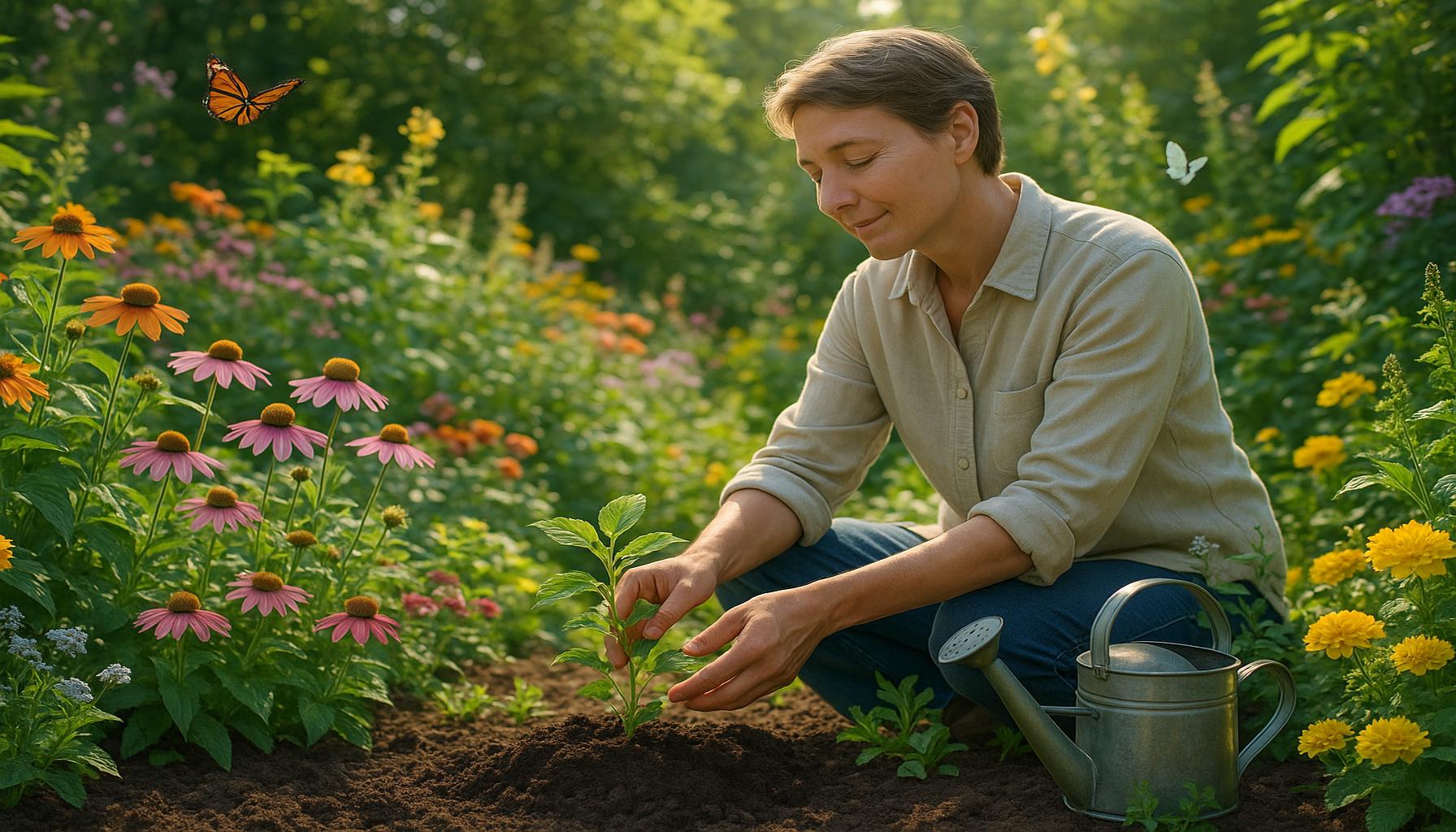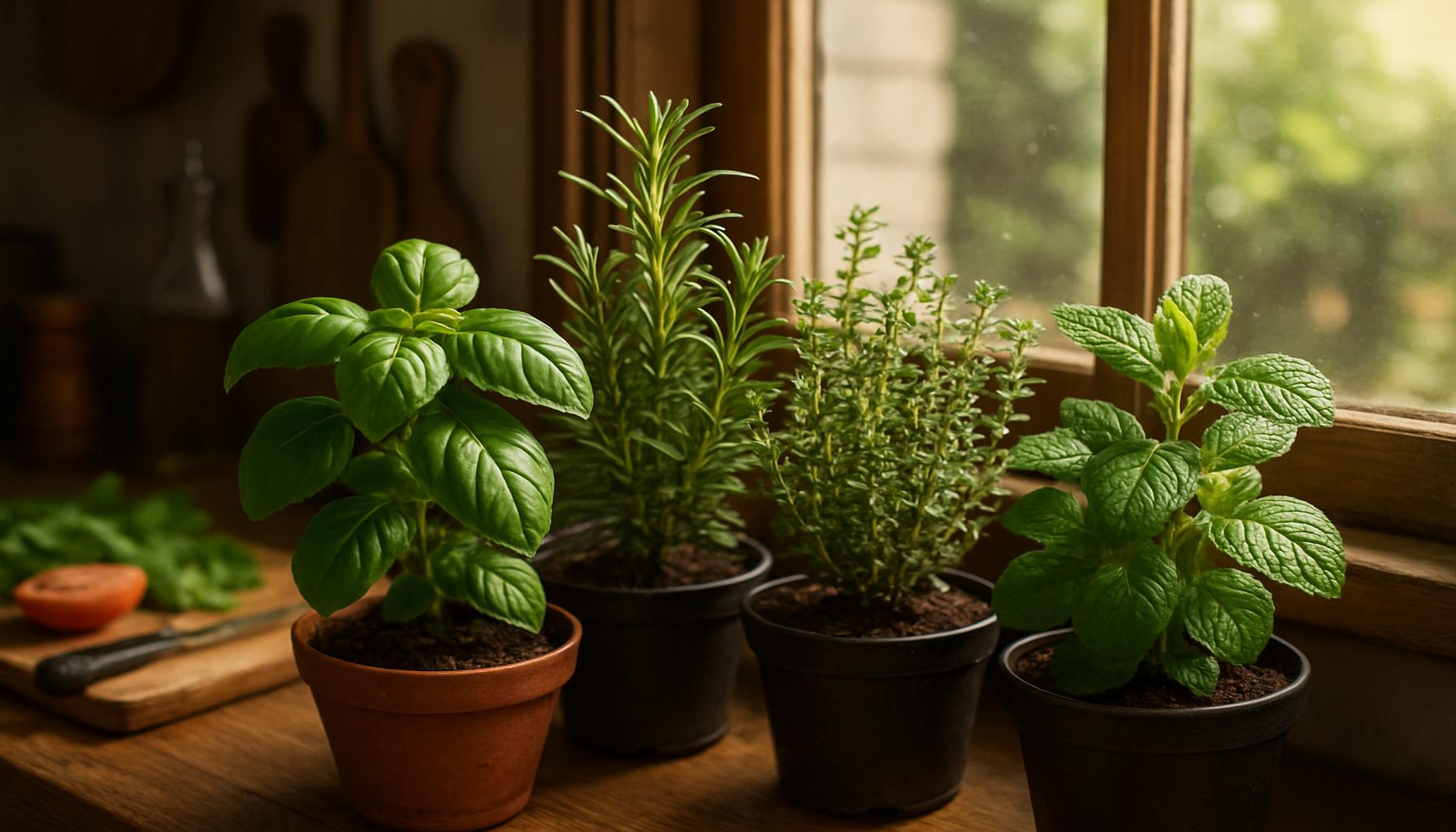How to Create a Sustainable Garden at Home: Tips for Beginners

Understanding Sustainable Gardening Practices
Creating a sustainable garden at home is not only an excellent way to enhance your outdoor space; it also contributes positively to the environment. Embracing sustainable practices helps reduce waste, conserve water, and promote biodiversity. As a beginner, diving into sustainable gardening can seem daunting, but it’s more accessible than you might think.
To kick-start your journey, consider the following key elements:
- Soil Health: A healthy garden begins with rich soil. Focus on enriching your soil with compost and organic matter. This not only helps in improving soil structure but also encourages the presence of beneficial microorganisms that enhance plant growth. Utilizing compost from kitchen scraps—vegetable peels, coffee grounds, and eggshells—can help create nutrient-dense soil that supports robust plant growth. Soil health is often the foundation of a sustainable garden, making it crucial for enhancing fertility and yielding homegrown produce.
- Native Plants: Selecting plants that are native to your area is vital for supporting local wildlife, particularly pollinators like bees, butterflies, and hummingbirds. Native plants are adapted to local climate conditions and soil types, leading to lower water and care requirements. For instance, in the Midwest, choosing purple coneflower or black-eyed Susan not only adds aesthetic appeal but also creates habitats for local fauna, thereby helping to sustain the natural ecosystem. Native plants can thrive through local droughts and other environmental challenges, illustrating the beauty of biodiversity.
- Water Conservation: Water scarcity is a growing concern across many regions of the United States, making effective water use essential. Implementing rain gardens, which are designed to capture and absorb rainwater, can significantly reduce runoff and support water conservation. Similarly, using drip irrigation systems minimizes evaporation and water wastage compared to traditional sprinklers. Additionally, utilizing mulch can help retain soil moisture, reducing the frequency of watering needed, thus conserving precious resources.
- Waste Reduction: Practicing composting kitchen scraps and yard waste reduces landfill impact and enriches your garden. By composting fruit and vegetable scraps, grass clippings, and leaves, gardeners can recycle organic waste into valuable compost material. This not only cuts down on waste but also creates a rich soil amendment that enhances soil health and overall plant vitality. For urban gardeners, even limited space can be utilized for compact compost setup, making it both feasible and beneficial.
These foundational tips not only create a thriving ecosystem but also provide you with a sense of accomplishment. Sustainable gardening empowers you to become more connected with nature while promoting eco-friendly practices. As you explore this world, you’ll uncover the joys of nurturing plants that create a lasting impact on your community and the planet.
In the following sections, we’ll delve deeper into practical strategies and techniques that will lead you toward developing a flourishing and sustainable garden at home. Take the first step toward this enriching journey, and discover how gardening can transform not just your backyard, but also contribute to a healthier planet. Are you ready to dig in?
DISCOVER MORE: Click here to learn effective techniques
Getting Started: Essential Steps for Sustainable Gardening
Embarking on the journey of sustainable gardening can be an enriching and fulfilling experience. By making thoughtful choices, you can cultivate a garden that not only enhances your living space but also supports the health of the planet. Here are some essential steps for beginners to establish a sustainable garden at home:
- Plan Your Garden Layout: Before stepping out into your yard with a trowel in hand, take the time to sketch a garden layout. This planning phase should include factors such as sunlight exposure, drainage patterns, and existing plants. Grouping plants with similar water and light needs can lead to efficient water use and healthier plants. For example, if you have a sunny spot in your yard, that’s perfect for growing tomatoes and peppers, while shadier spots may be better for leafy greens.
- Choose Heirloom Seeds: When selecting seeds for your garden, consider opting for heirloom varieties. These seeds have been passed down through generations and often exhibit better flavor, nutritional value, and resilience. They also contribute to preserving the genetic diversity of plants, promoting sustainable practices. You can find heirloom seeds at local farmer’s markets or gardening centers, strengthening the community’s agricultural heritage.
- Implement Companion Planting: One of the secrets to a thriving garden is to utilize the practice of companion planting. This technique involves pairing plants that can benefit each other when grown in proximity. For instance, planting marigolds amongst your vegetables can help deter pests, while basil can improve the growth of tomatoes. Implementing companion planting reduces the need for chemical pesticides and fosters a healthier ecosystem within your garden.
- Organic Pest Control: Maintaining plant health often requires addressing pest issues. Instead of reaching for chemical pesticides, consider utilizing natural remedies. Introduce beneficial insects like ladybugs and lacewings, which prey on harmful pests. You could also make your own insecticidal soap using household ingredients like dish soap and water to tackle aphid infestations. This approach not only protects your plants but also ensures that your garden remains a safe haven for beneficial wildlife.
- Practice Crop Rotation: To maintain soil health and prevent pests and diseases, practice crop rotation each season. By changing the types of plants grown in each area of your garden, you can prevent nutrient depletion and keep harmful insects at bay. For instance, following a heavy feeder like corn with legumes such as beans can restore nitrogen levels in the soil, enhancing future crops’ growth potential.
Starting your sustainable garden doesn’t necessarily require advanced skills; every small step you take can have a significant impact. By laying the groundwork with these essential steps, you not only create a beautiful space for yourself but also contribute to environmental sustainability. As you continue to explore gardening techniques, remember that this process comes with trial and error—and that’s perfectly okay! Embrace the learning curve and discover the joy of creating a garden that thrives with nature.
Creating a sustainable garden at home is not just a trend; it’s a conscious choice towards healthier living and environmental stewardship. As you embark on this exciting journey, there are several essential practices to adopt that will enhance the sustainability of your garden while yielding a bounty of benefits.First, consider implementing companion planting. This age-old practice involves growing certain plants together that can improve growth, deter pests, and reduce disease. For instance, basil planted alongside tomatoes can enhance their flavor while preventing pests from invading. This method not only maximizes your space but also encourages a balanced ecosystem right in your backyard.Next, focus on native plants. These plants are adapted to your local climate and soil conditions, requiring less water and maintenance compared to exotic species. They provide essential habitat for local wildlife, including pollinators such as bees and butterflies, making your garden a sanctuary for biodiversity.Additionally, effective water management is crucial. Implementing a rainwater harvesting system can significantly reduce your water consumption. By collecting rainwater from your roof, you can provide your plants with a sustainable water source, reducing reliance on municipal water and saving on water bills.Moreover, consider establishing a compost system. Composting kitchen scraps and garden waste enriches your soil with nutrients, thereby reducing the need for chemical fertilizers. This not only benefits your plants but also supports the environment by diverting waste from landfills. Lastly, focus on building healthy soil through no-till gardening. By minimizing soil disturbance, you preserve the ecosystem within the soil, allowing beneficial organisms to thrive. This practice enhances moisture retention, reduces erosion, and fosters a healthy plant ecosystem.Incorporating these strategies into your sustainable gardening plan will not only make your garden flourish but also promote environmental health and biodiversity. The rewards of your effort will extend beyond your backyard, creating a positive impact on the planet. As you begin this enriching journey, remember that every small action counts in creating a sustainable future.
DISCOVER MORE: Click here to learn about eco-friendly crafting
Enhancing Your Sustainable Garden: Advanced Techniques to Consider
Once you’ve established the foundational elements of your sustainable garden, you may want to explore some advanced techniques to further enhance your practices and yield. These strategies can transform your garden into a remarkable ecosystem, fostering biodiversity and promoting sustainability. Here are several innovative approaches to consider:
- Rainwater Harvesting: Capturing and utilizing rainwater is an excellent sustainable practice. Install a rain barrel to collect runoff from your roof during rainfall, which can be used to water your garden during drier periods. Not only does this reduce your reliance on municipal water systems, but it also helps prevent stormwater runoff that can pollute local waterways. Remember to check local regulations regarding rainwater collection as guidelines may vary.
- Soil Health: Composting is one of the cornerstones of sustainable gardening. Creating a compost pile allows you to recycle kitchen scraps, yard waste, and other organic materials, turning them into nutrient-rich soil. This process not only reduces landfill waste but also enriches the soil, improving its structure, moisture retention, and nutrient availability. Start with a simple compost bin and add materials like fruit and vegetable peels, coffee grounds, and grass clippings.
- Mulching: Applying a thick layer of organic mulch, such as straw, wood chips, or shredded leaves, around your plants offers multiple benefits. Mulch effectively retains soil moisture, suppresses weeds, and gradually adds nutrients back into the soil as it decomposes. This practice can help you minimize the need for frequent watering while creating a habitat for beneficial microorganisms.
- Vertical Gardening: If space is limited, consider vertical gardening techniques. By utilizing trellises, vertical planters, or wall-mounted planters for your herbs and vegetables, you can maximize your gardening area while adding an aesthetic appeal to your outdoor space. This method also promotes improved air circulation and can alleviate some common pest issues by elevating plants off the ground.
- Native Plant Selection: Choosing native plants that are adapted to your local climate and soil conditions can foster a sustainable garden. Native plants require less water and maintenance as they are well-suited to their environment. Moreover, these plants attract native pollinators and wildlife, creating a balanced ecosystem. Research local native plant species, and consider incorporating them into your garden design.
By integrating these advanced techniques into your sustainable gardening approach, you not only enhance the aesthetic and functional value of your garden but also create a self-sustaining environment that will thrive year after year. These practices lay the groundwork for a resilient ecosystem that benefits both your household and the surrounding community. Innovative ideas such as rainwater harvesting or native plant selection contribute to a lifestyle that is conscious of environmental impacts, ensuring that your garden is more than just a collection of plants—it’s a vital part of a thriving ecosystem.
DISCOVER MORE: Click here to explore creative gardening solutions
Conclusion: Nurturing a Sustainable Future, One Garden at a Time
Creating a sustainable garden at home is not just an enriching hobby; it is a commitment to fostering a healthy environment while cultivating your own personal oasis. Throughout this guide, we have explored a variety of strategies designed to help beginners establish a flourishing garden that contributes positively to our planet. From the essentials of soil health and composting to advanced techniques like rainwater harvesting and vertical gardening, every step taken is a move towards sustainability.
By being mindful of your choices—selecting native plants, conserving water, and enriching the soil with organic matter—you are not only enhancing your garden’s productivity but also creating a harmonious ecosystem that supports local wildlife. Additionally, with minimal effort and a little creativity, integrating eco-friendly practices into your gardening routine lends itself to a more resilient landscape that can withstand the challenges of our changing climate.
As you embark on this gardening journey, remember that every little change matters. Start small, experiment, and observe the unique way your garden evolves over time. Not only will you reap the benefits of fresh fruits and vegetables, but you will also cultivate a deeper connection with nature and grow awareness of how our individual actions can collectively make a significant impact on the environment. The sustainable garden you create today will pave the way for a greener tomorrow—both for you and for generations to come.


